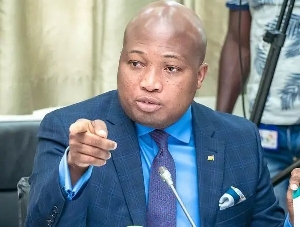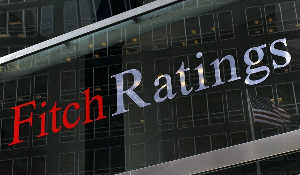The French oil giant Total SE’s chief executive, Patrick Pouyanne, yesterday described as a “momentous occasion in history” the signing of the three agreements for the development of the proposed East African Crude Oil Pipeline (EACOP) and committed to first commercial oil production starting around 2025.
“It is the beginning of a journey,” Mr Pouyanne, who jetted into the country Sunday morning for the signing ceremony alongside President Museveni and his Tanzanian counterpart Samia Suluhu Hassan, said. “Expect the first oil tanker to dock at Tanga port in early 2025.”
Once developed the 1,443km EACOP will transport Uganda’s crude oil from oil fields in the districts of Nwoya, Buliisa, Hoima and Kikuube to Chongoleani terminal in Tanga at the Indian Ocean in Tanzania, where it will be loaded into tankers en route to the international market.
The transit tariff per barrel of crude oil going through the pipeline was capped at $12.77 owing to the tax concessions offered by the Tanzanian government. The pipeline is merely a medium to take Uganda’s crude oil to the international market, wherever prices are favourable; so the higher the tariff/transport the less benefits, added to other costs of getting it (oil from the ground).
The project is expected to cost at least $3.8billion pooled through the EACOP holding company co-owned by the oil companies—Total E&P and China National Offshore Oil Company (Cnooc), and the governments of Uganda and Tanzania through national oil companies, Unoc and TPDC, respectively.
Mr Pouyanne described the Uganda oil project as “one of the largest in Africa” with capital requirements of more than $10b and which represent significant social and environmental stakes as the company’s area of operation is partly located in the Murchison Falls National Park.
“So we must do it in an efficient way,” he said. “It won’t be a success if we don’t show exemplary of the environment and taking care of the people.”
Three agreements were signed yesterday; the Host Government Agreement (HGA) for Uganda signed by Energy minister, Goretti Kitutu and the pipeline holding company managing director, Martin Tiffen. A separate HGA with the Tanzanian government which was due for signing was deferred to next week following last-minute shuffling and amendment of documents on the country’s shareholding in the project.
The HGA, which Uganda, Tanzania, and Total E&P as the lead developer of the pipeline started negotiating in November 2017 and officials say has been the most burdensome, details among others governmental obligations, investor duties, environmental and other relevant standards, liability, and project closure.
The other agreements are, the Shareholders Agreement—which details the obligations and shareholders structure—and the Tariff and Transportation Agreement (TTA)— between the pipeline company and the shippers of Uganda’s crude oil through the pipeline—were signed by chief executives of Unoc and TPDC, respectively, and Mr Tiffen, President of Cnooc Uganda, Mr Chen Zhuoubiao, and the Total E&P senior vice president for Africa, Mr Nicolas Terraz.
Energy minister, Ms Kitutu is in the coming weeks expected to table before Cabinet and later Parliament Bill which crystalizes all the signed agreements relating to the pipeline.
With the heavy work—negotiation and signing of the agreements—out of the way, officials intimated to this newspaper that next on agenda is “to tie a few loose ends” including government re-evaluating the Engineering, Procurement and Construction (EPC) contracts called by the oil companies since all money spent is recoverable after sale of the crude oil.
One official was optimistic that reviewing the tenders could take at least another month. Another revealed they expect construction works to start by latest July.
What is however not yet known is when Total E&P and Cnooc intend to start work. Neither Mr Pouyanne who hinted that at least $5b would be spent locally nor the Cnooc Uganda President, Mr Chen, was clear in their speeches.
The Ugandan section of the pipeline runs through 179 villages in 10 districts—Hoima, Kikuube, Kakumiro, Kyankwanzi, Mubende, Gomba, Ssembabule, Lwengo, Kyotera and Rakai. In many of these areas locals are familiar with the project and expectant of opportunities including jobs and provision of goods and services.
The oil sector regulator, the Petroleum Authority of Uganda, has ring-fenced some 25 fields including Hotel and catering, transport and logistics, security, civil works, human resource management, survey, camp management, and provision of labour, for only Ugandans.
A 2014 study titled “A survey to foster opportunities for Ugandans in the Oil and Gas sector” commissioned by government and oil firms detailed that the oncoming development/construction phase will create between 100,000 and 150,000 direct and indirect jobs.
This is tagged to investments of between $10b-$15billion for development of the EACOP, and the oil fields and related infrastructure including two Central Processing Facilities (CPF) for separating crude oil from other impurities like sand, a gas to power plant, and a network of feeder pipelines.
A bilateral affair
Prior to the signing ceremony, President Museveni held bilateral talks with President Hassan during her first foreign trip since assuming office last month following the death of President Magufuli.
President Hassan described the project as a “cornerstone” of partnership and relations between Uganda and Tanzania and called on the parties involved to expedite its development.
The two principals, in a joint communique read by Foreign Affairs minister Sam Kutesa, acknowledged “the progress made in negotiation and finalisation of the HGA and related agreements” and directed the pipeline company to move forward with awarding of EPC contracts for construction.
The EACOP EPC tenders are divided in three lots; the Tanzanian pipeline segment will be constructed in two parts, to be awarded to separate contractors, and one lot for the Ugandan segment. Eighty [80] percent of the pipeline, 1,147km, will be on the Tanzanian side, and it is estimated that 80 percent of the $3.8 project capex will be spent in Tanzania.
Sunday’s was initially scheduled for last month, March 22, but was deferred to allow mourning of President Magufuli.
In his speech yesterday, President Museveni revealed that he specifically set the new date as April 11th (yesterday) for sentimental reasons; to coincide with the toppling of former President Idi Amin by Ugandan rebel groups with the help of Tanzanian troops “forty-two years ago, this same day.”
“So today is a triple victory for Uganda and Tanzania; militarily, politically, add economically,” he said.
Africa News of Monday, 12 April 2021
Source: thecitizen.co.tz

















